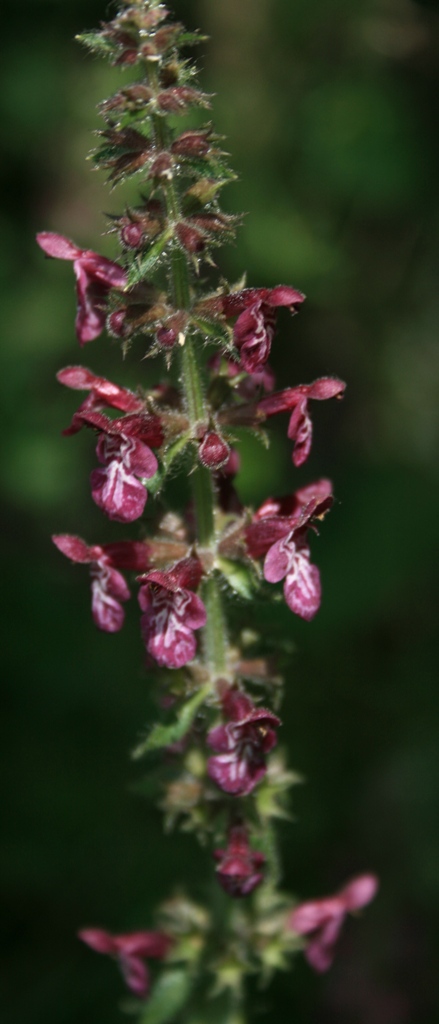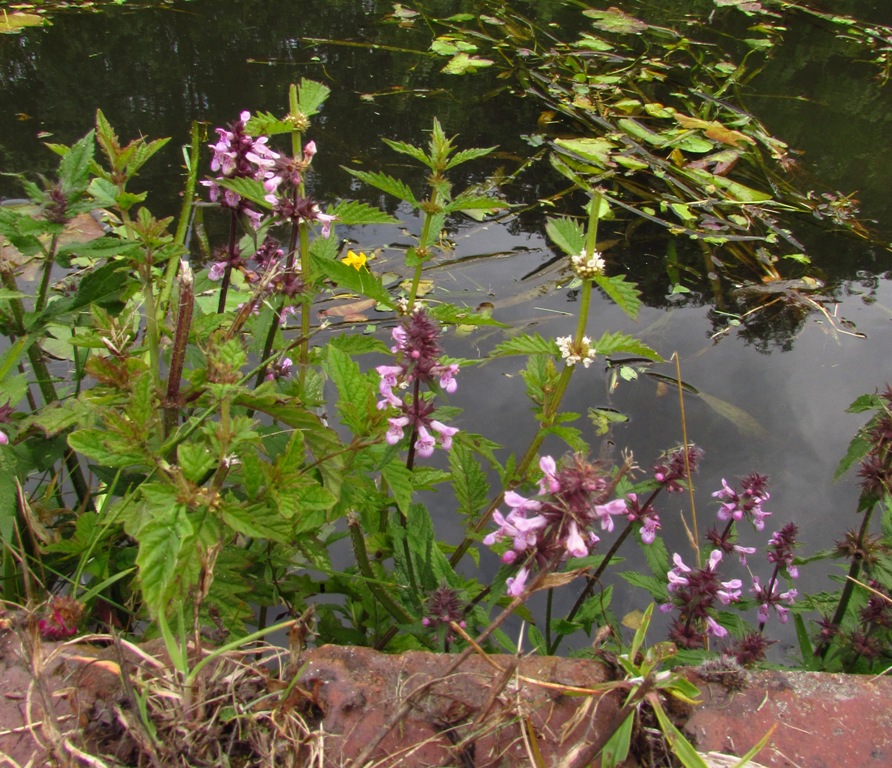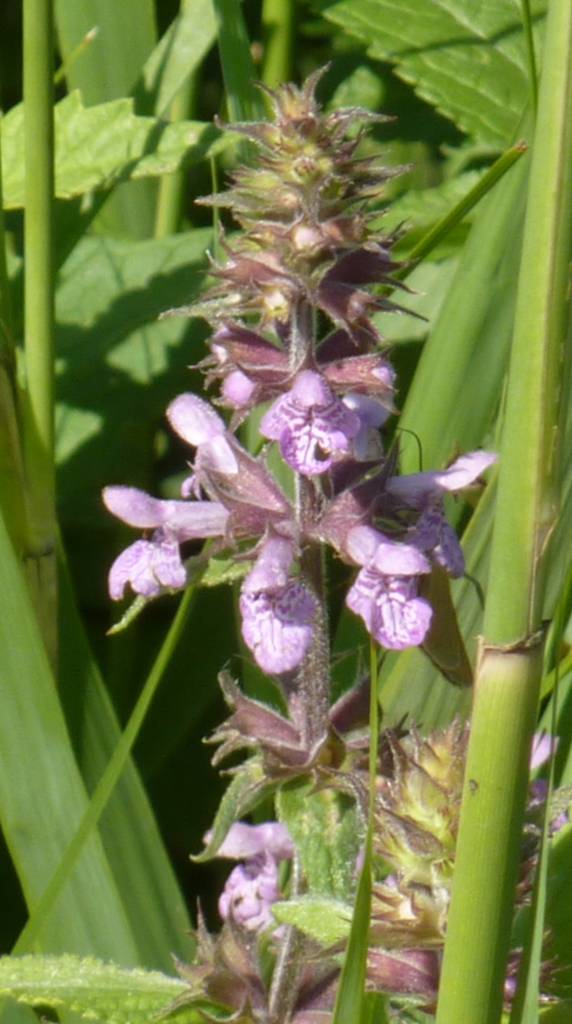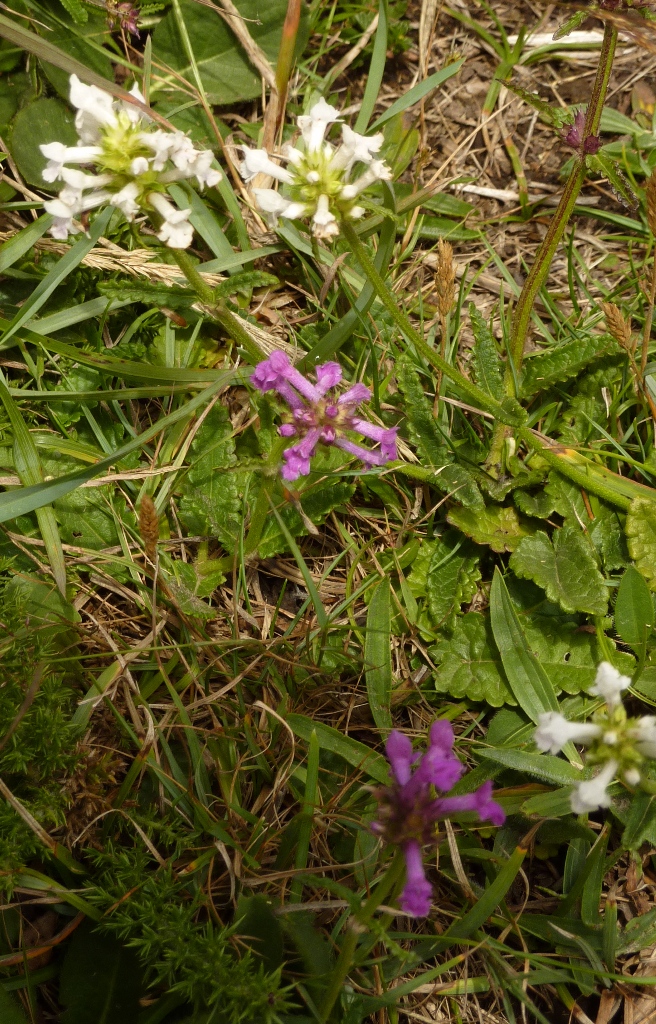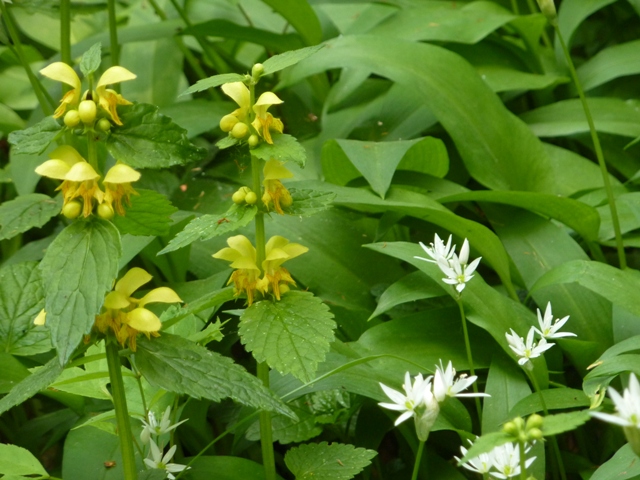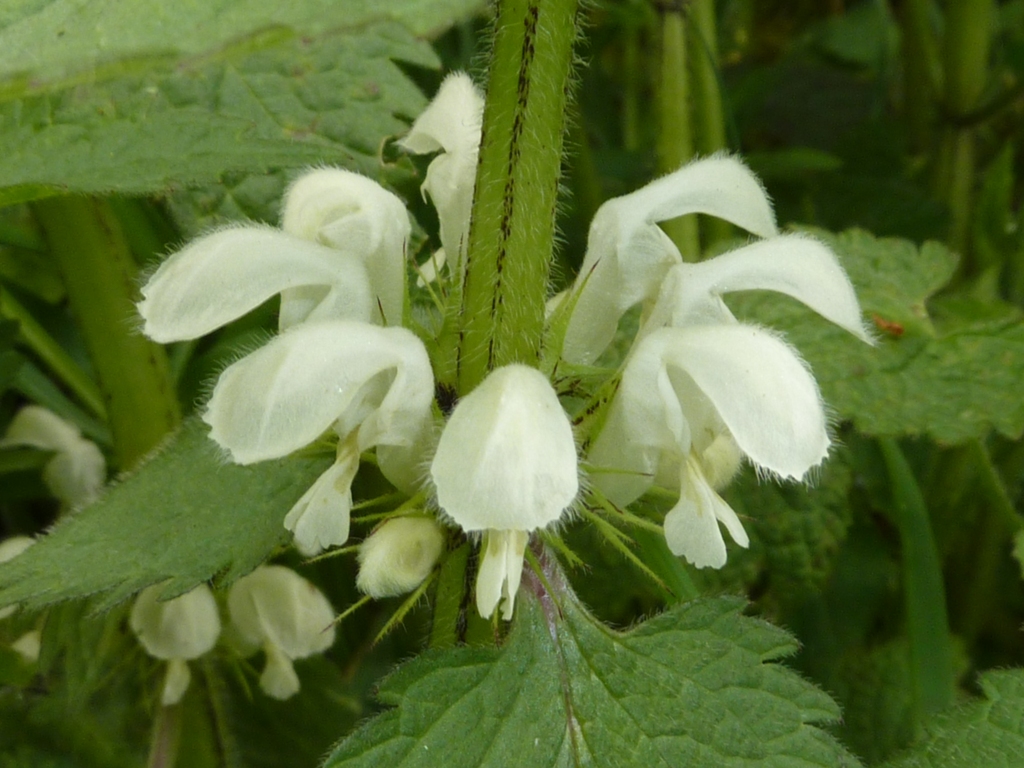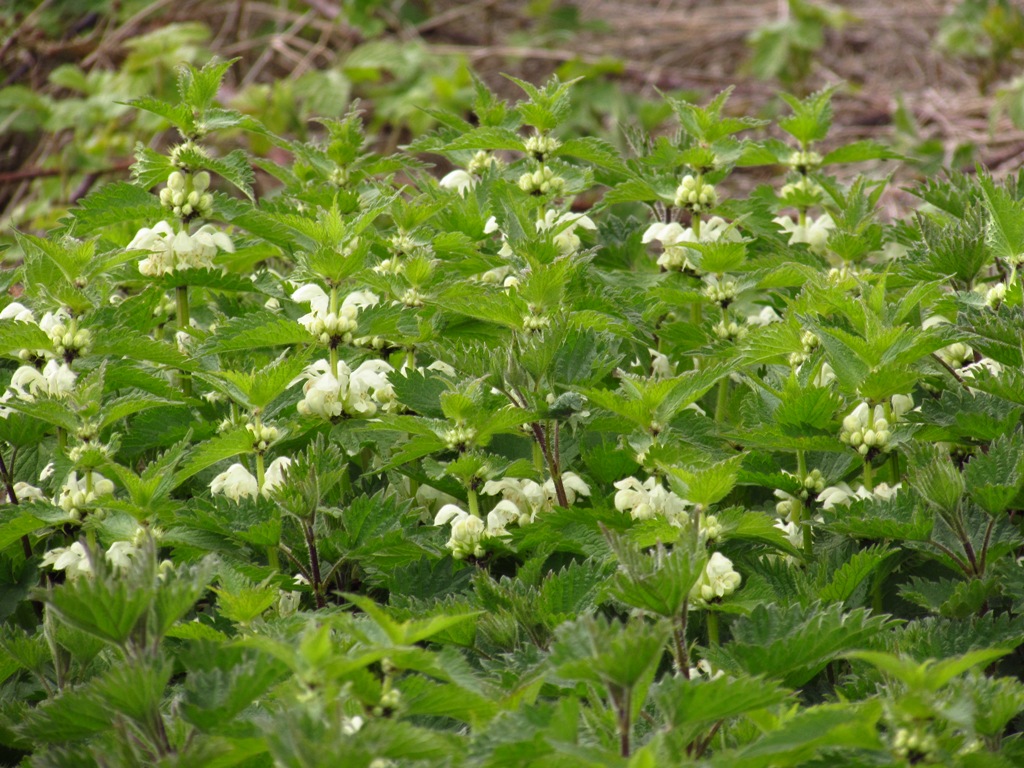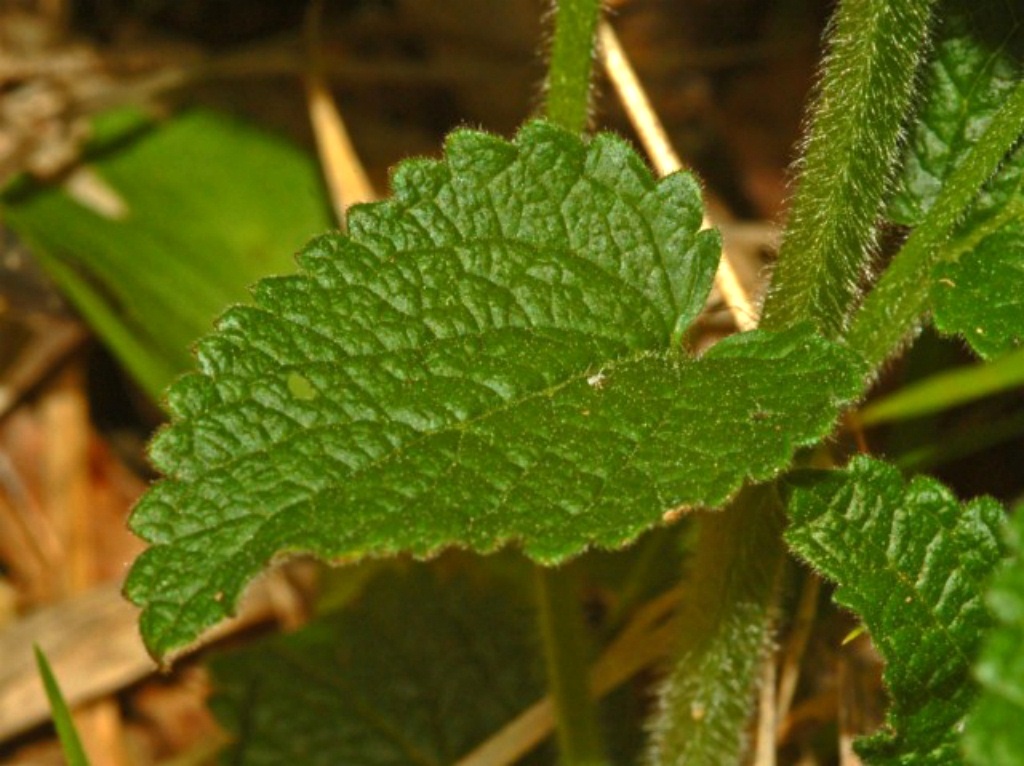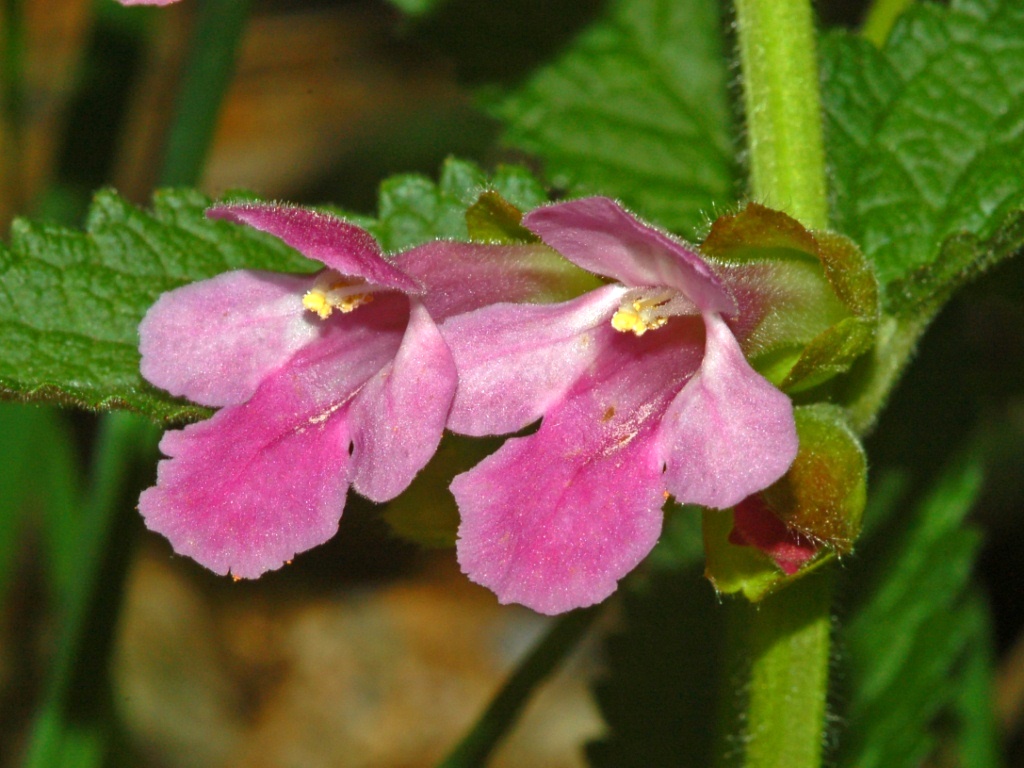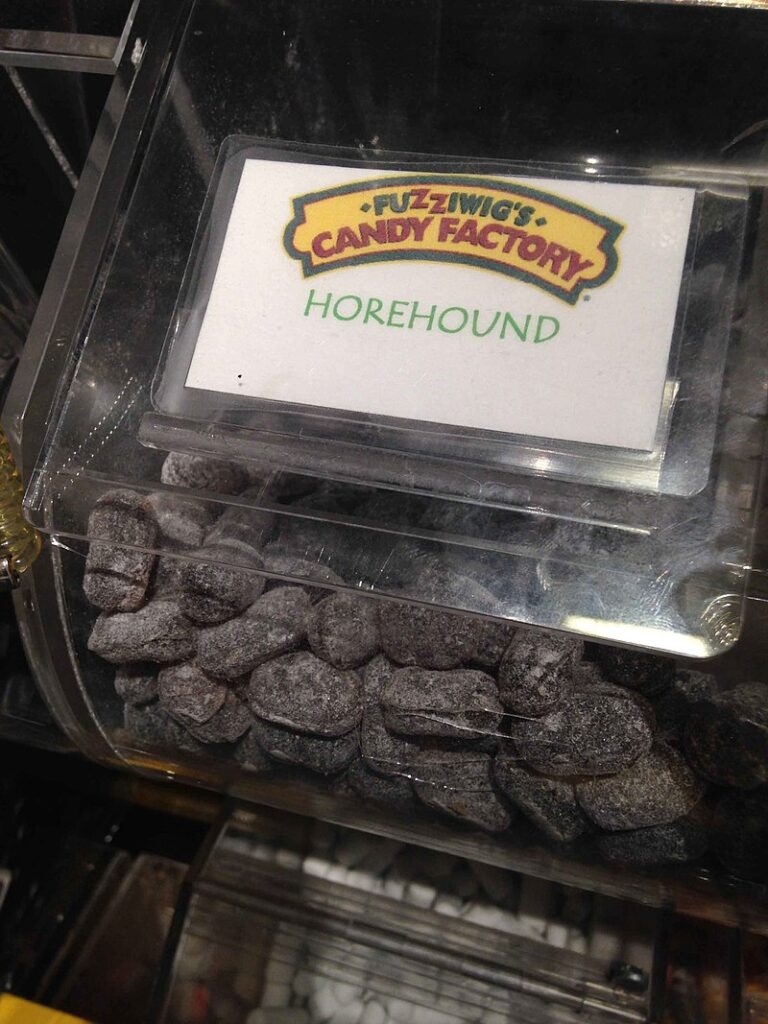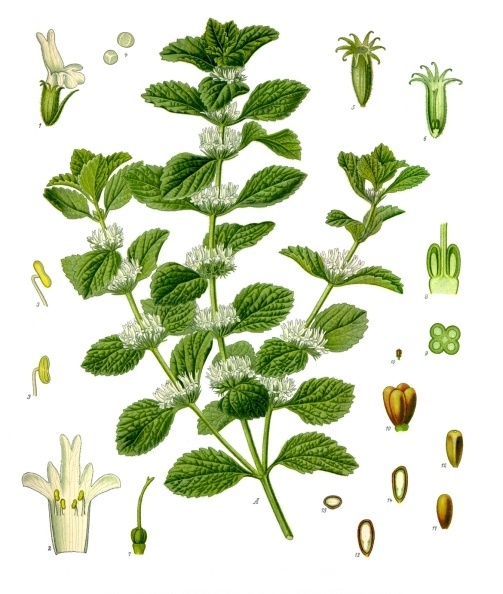This family of the Lamiacea or the Deadnettle family (family 128 in Stace) is one of my favourites for the flowers and herbs it gives us. The insects and in particular the bees also love it for the nectar the flower provides.
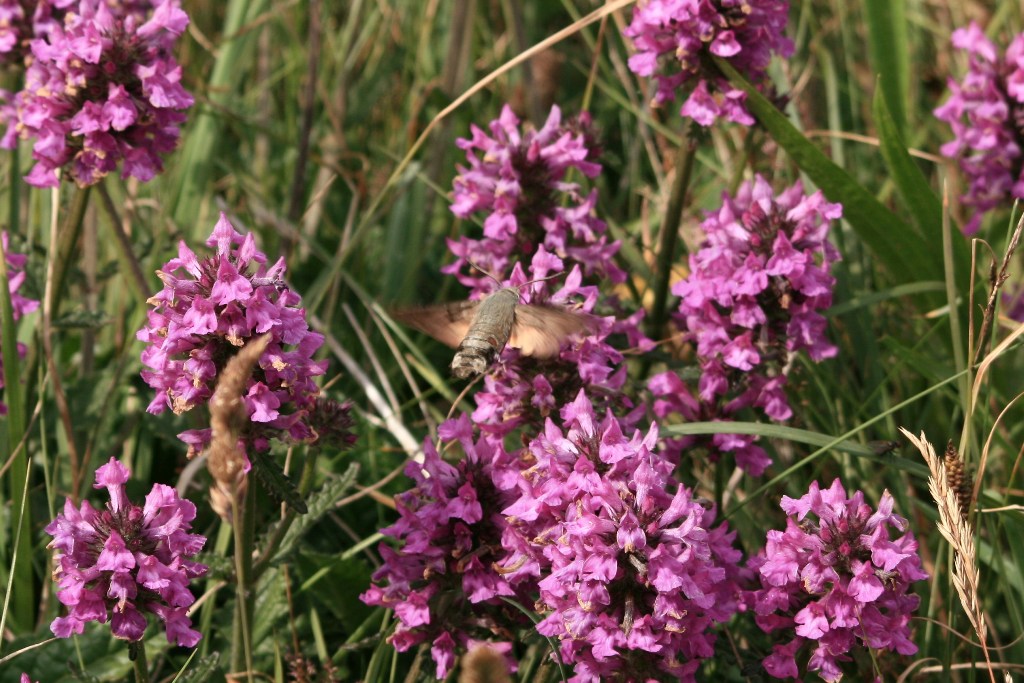
It is a large family in the B.I. with 27 genera. To identify to genus level, Stace has split them into 8 groups. Not all genera are native but may be garden escapes. As it too large for one week I will spread this family into 3 separate blogs and weeks.
To make life even easier for identifying the plants the taxonomists also have sub divided this large family world-wide into 4 Subfamilies, where again the genera in those groups have similar characters.
This is the whole idea about classification to make sense to all that variety out there!
To summarize, I will place only the native as well as Archyophytes into those, so numbers missing genera below are either not native or have no connection with us people, which is the whole idea of this virtual ethnobotanic blog. On the next page you can find the uses for all the members of the first 2 Subfamilies:
Blue background for general interest. Green background for general uses and wildlife. Pink background for medicinal uses. Pictures by Matt Summers unless otherwise stated.
In short first SUBFAMILY 1: LAMIOIDEAE (genus 1-10)
- 1) Stachys or Woundworts with 6 species
- 2) Betonica officinalis or Betony
- 3) Ballota nigra or Black Horehound
- 4) Leonorus cardiaca or Motherwort (not native but formerly grown medicinally)
- 5) Lamiastrum galeobdolon or Yellow Archangel
- 6) Lamium or Dead-nettles with 6 species are all very surprisingly archyophytes
- 7) Galeopsis or Hemp-nettles with 5 species whereby 2 are native and the rest archyophyte
- 9) Melittis melissophyllum or Bastard balm
- 10) Marrubium vulgare or White Horehound.
Uses are mainly medicinal so the following information comes mostly from the very useful book by Julian Barker: The Medicinal Flora of Britain and Northwestern Europe. For clarity I will use the order as above in Stace rather than the order in this book. There are many difficult medical terms for which links are provided if you wish to know more about this.
Stachys sylvatica (Hedge Woundwort) & S. palustris (Marsh Woundwort)
Uses: Internally taken for period pains.
Hedge woundwort is popular with bees.
Although the marsh woundwort has little fragrance, it is very attractive to bumblebees. Nectar indicators guide the insect to probe into the centre of the flower and the anthers of the stamens and the pistils are correctly located for the insect to transfer pollen between flowers.
Along with its close relatives field woundwort and marsh woundwort, as their common names suggest, they are used to promote the healing of wounds. The famous 17th century herbalist John Gerard was very impressed with its powers and used it extensively.
Betonica officinalis or Betony
Action: Sedative and antispasmodic. Bitter. Choleretic. Uses: Headaches (tension and anxiety) and head pains. Vertigo. Wound herb. Henri Leclerc recommends it against sores and varicose ulcers.
Betony has been used in traditional Austrian medicine internally as tea, or externally as compresses or baths for treatment of disorders of the respiratory tract, gastrointestinal tract, nervous system, skin and gynecological problems.
Modern herbalists prescribe betony to treat anxiety, gallstones, heartburn, high blood pressure, migraine and neuralgia, and to prevent sweating. It can also be used as an ointment for cuts and sores.
Ballota nigra or Black Horehound
Action: Antiemetic. Sedative. Uses: Nausea. Vomiting. Nervous dyspepsia. Migraine. Travel sickness (in combination with Peppermint) and sickness of early pregnancy (combined with Chamomile). Tinnitus.
The plant was commonly grown in physic gardens of apothecaries and monasteries for medicinal purposes.
Leonorus cardiaca or Motherwort
Leonorus cardiaca or Motherwort (not native but indispensable remedy according to Barker)
Action: Cardiac tonic. Hypotensive. Mild sedative and antispasmodic. Uterine stimulant. Uses: Nausea. Simple tachycardia. Palpitations. Anxiety (especially if these symptoms are associated with the menopause). ‘Nervous indigestion’. Used extensively with other remedies for dysmenorrhoea and also in the management of hypertension. Long tradition for use in anxiety late in pregnancy.
The fresh or dried flowers can be used as a flavouring in soups, particularly lentil or split pea. They are also used as a flavouring in beer. Fresh or dried flowers can be used to make a tea. (PFAF)
Lamiastrum galeobdolon or Yellow Archangel
Several of its varieties have escaped into more urban wild areas from gardens. These are used as an ornamental groundcover in shade where it can spread rapidly.
Lamium or Dead-nettles
Lamium or Dead-nettles. Greek laimus for throats, meaning that of the corolla. Most surprising is that all six species in the B.I. are Archaeophyte or introduced. Most species have likely got similar uses and are all brilliant for bees. Information from the links provided.
Lamium album or White Dead-nettle
Medicinal Uses: Action: Astringent and Haemostatic (especially tonic to uterine circulation). Anti-inflammatory. Demulcent and mild sedative. Expectorant ad anti-catarral. Uses: Dysmenorrhoea, Menorrhagia. Leucorrhoea. Beningn prostatic hypertrophy. Bladder disorders. Anaemia. Mild insomnia. Upper respiratory catarrh. Said to be of use in bronchitis. Topically for wounds.
Other Uses:
Young tips can be eaten in salads or cooked as a spinach.
They can also be dried for later use. The leaves are a good source of vitamin A. A pleasant herb tea is made from the flowers.
Bees, especially bumble bees are attracted to the flowers which are a good source of early nectar and pollen, hence the plant is sometimes called the bee nettle.
The other 5 species are:
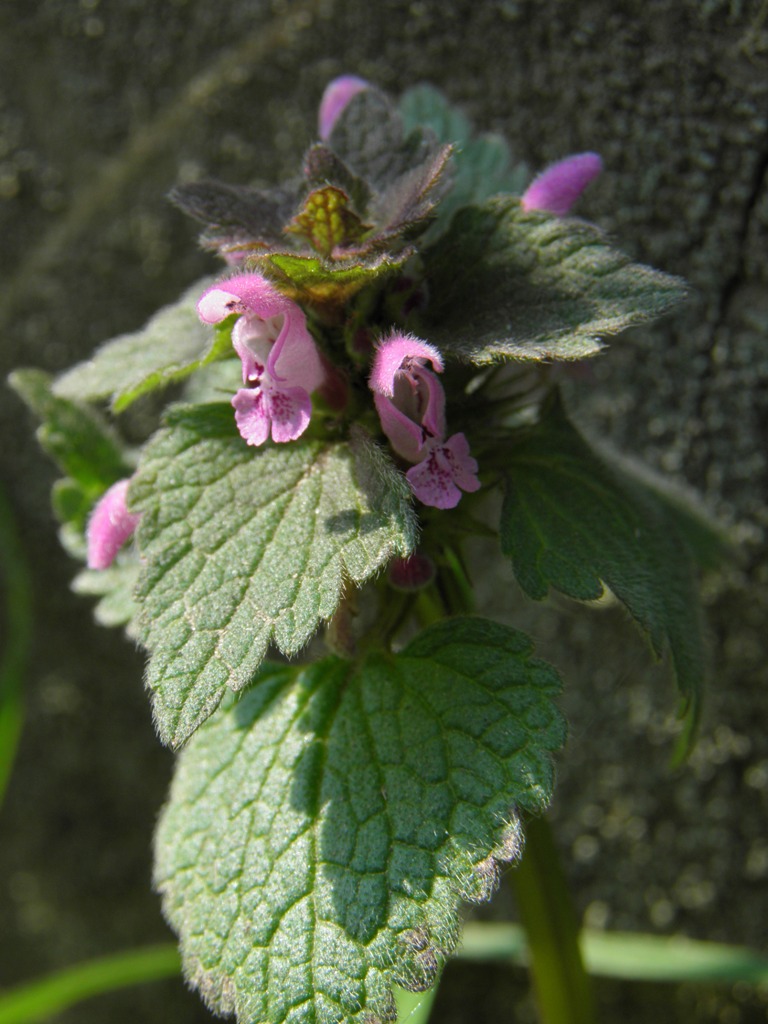
Lamium purpureum or Red Dead-nettle
Young plants have edible tops and leaves, used in salads or in stir-fry as a spring vegetable. If finely chopped it can also be used in sauces.
Undyed, the pollen itself is a red colour and is very noticeable on the heads of bees that frequent its flowers.
The whole plant is astringent, diaphoretic, diuretic, purgative and styptic. In terms of traditional medicinal uses, dried leaves have been used as a poultice to stem hemorrhaging whilst fresh bruised leaves have been applied to external wounds and cuts. The leaves are also made into a tea and drunk to promote perspiration and discharge from the kidneys in treating chills.
L. hybridum or Cut leaved Dead-nettle
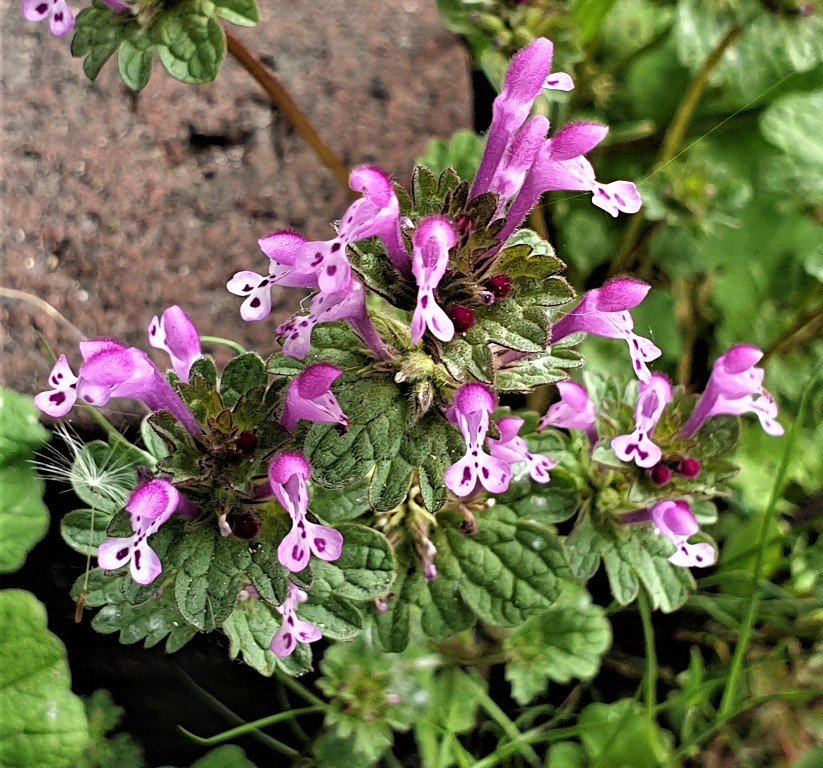
L. amplexicaule or Henbit Dead-nettle
The young leaves and shoots can be eaten raw or cooked, as can the stems and flowers. Henbit has a slightly sweet and peppery flavor, similar to celery.
The plant is antirheumatic, diaphoretic, excitant, febrifuge, laxative and stimulant.
L. confertum or Northern Dead-nettle
and finally the introduced/garden species called:
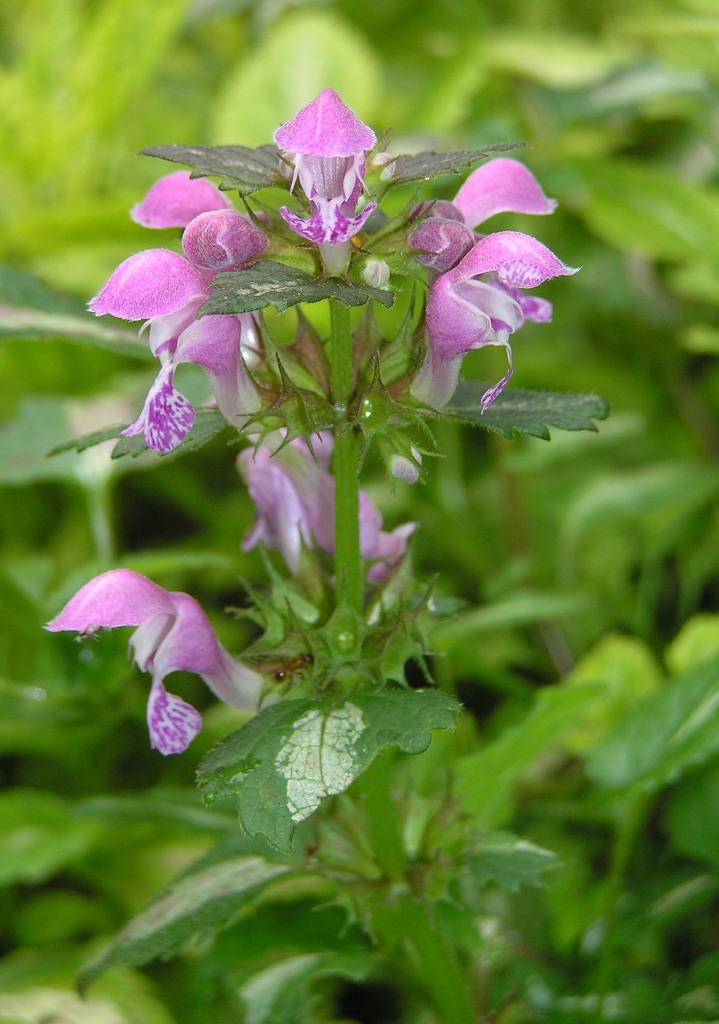
L. maculatum or Spotted Dead-nettle.
This plant is an attractive ground covering plant in moisture retentive soils and has several cultivars for garden use.
Galeopsis or Hemp-nettles
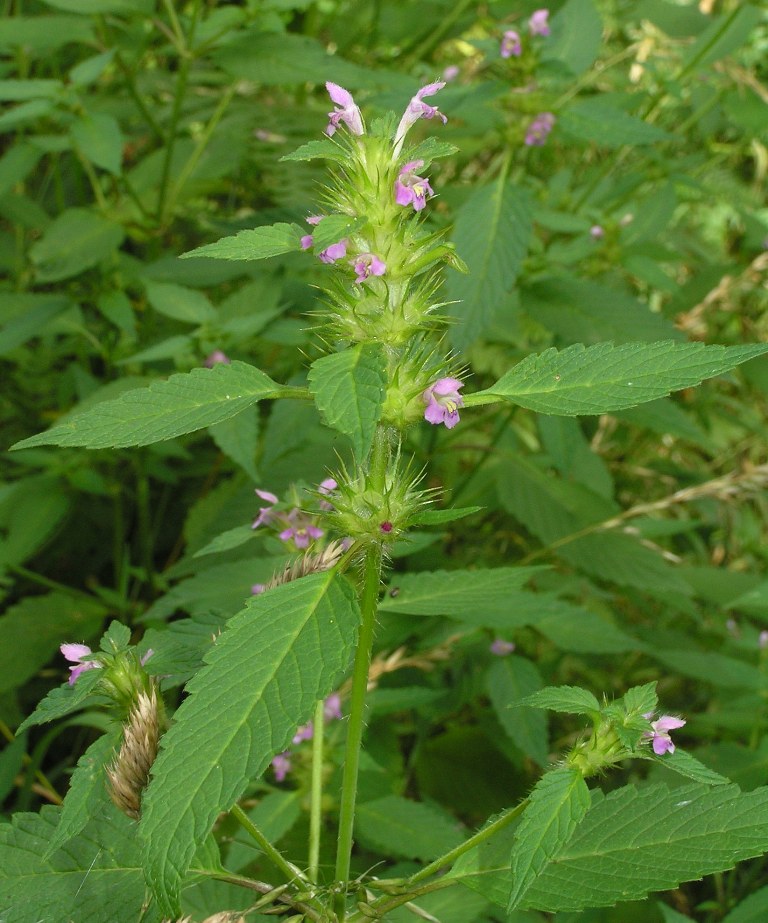
Galeopsis or Hemp-nettles
G. tetrahit, G. ladonum, G. segetum and G. speciosa. Uses: Fresh flowering tops for remineralising, and of benefit in iron deficiency anaemia. High in silicate. Useful in chronic respiratory disorders.
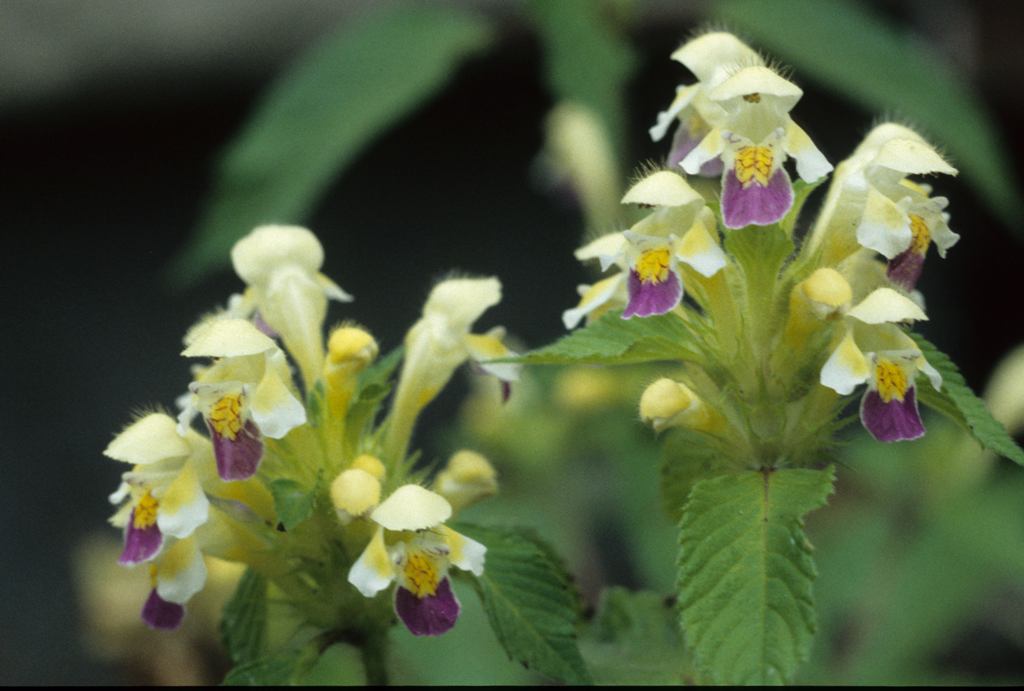
G. speciosa or Large Flowered Hemp Nettle
The plant is however poisonous, causing paralysis.
A drying oil is obtained from the seed. It is used as a polish for leather. This plant is sometimes grown in the wild garden it has an attractive bi-coloured flower.
Galeopsis is Greek and means weasel like, from the open mouth of the corolla or could also be from the Latin galea for helmet. with 5 species whereby 2 are native and the rest are archyophyte.
Melittis melissophyllum or Bastard balm
Melittis melissophyllum or Bastard balm
Attractive looking plant but with a bad smell. An old medicinal herb for anxiety, insomnia and nervous indigestion. As an antimicrobial, an eye-bath with a strong infusion is good for complicated conjunctivitis. Note:- It contains coumarins which should never be taken with anticoagulant drugs!
Marrubium vulgare or White Horehound
Marrubium vulgare or White Horehound.
Marob (= bitter in Hebrew). Horehound is from the Old English, har hune (= white and hoary; nothing to do with dogs). It has been used for 2000 years as a cough remedy. Action: Expectorant. Spasmolytic. Antimicrobial. Astringent and bitter tonic. Uses: Acute or chronic bronchitis with non-productive cough. Sore throats. Combines well with Coltsfoot, Cowslip and Marshmallow leaf in painful cough and with Cowslip and Fresh Ginger in Whooping Cough.
Horehound drops are bittersweet candies made with sugar and an extract of M. vulgare. They are dark-coloured, dissolve in the mouth, and have a flavor that has been compared to menthol and root beer. Like other products derived from M. vulgare, they are sometimes used as an unproven folk treatment for coughs and other ailments
M. vulgare is used to make beverages such as horehound beer, horehound tea (similar to the Maghrebi mint tea), and the rock and rye cocktail.
SUBFAMILY 2: SCUTELLARIOIDEAE (Genus 11 in Stace)
Scutellaria or Skullcaps
Scutellaria or Skullcaps with three native species.
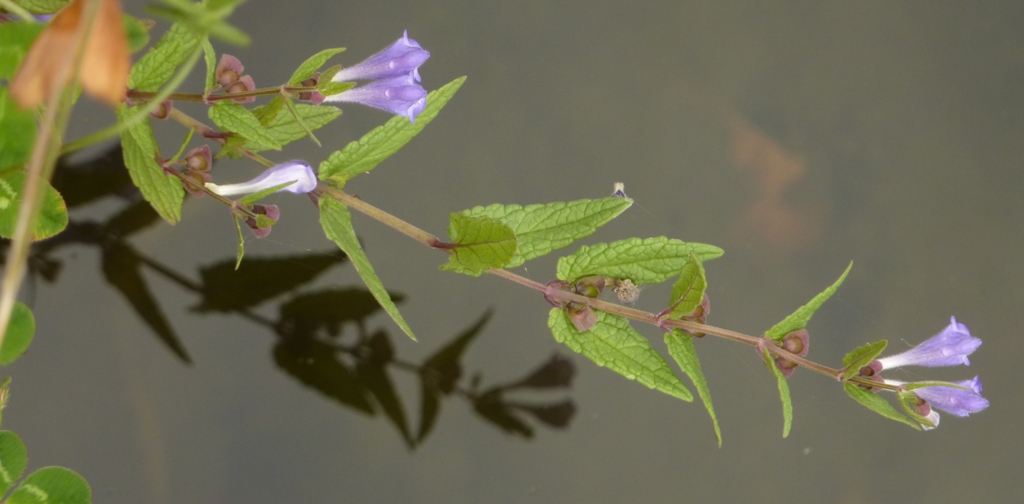
Common Skullcap or Scutellaria galericulata.
Found a really interesting website here: The skullcap owes its name to the shape of the blossom, which resembles the human skull.
This Common Skullcap should not be confused with its family types of Skullcaps, like the Marsh Skullcap or the Hooded Skullcap. They have quite different medical uses and effects. There are over 200 different types which are similar, but slightly different. As you can read on Wikipedia: “Blue skullcap (S. lateriflora) is accepted as the “skullcap” used in traditional North American medicine, however common skullcap shares many of the same active chemicals and is used as a substitute in Britain and Europe.
Action: The herb is anti-inflammatory, antispasmodic, slightly astringent, febrifuge, nervine and strongly tonic. In the home an infusion is sometimes used in the treatment of throat infections. The plant is harvested in the summer as it comes into flower and can be dried for later use. This plant is rarely if ever used in herbal medicine, though it is said to have the same applications as S. lateriflora. These applications are:
Skullcap was traditionally used in the treatment of a wide range of nervous conditions including epilepsy, insomnia, anxiety, delirium tremens, withdrawal from barbiturates and tranquillisers, and neuralgia. An infusion of the plant has been used to promote suppressed menstruation; it should not be given to pregnant women since it can induce a miscarriage. This plant should be used with some caution since in excess it causes giddiness, stupor, confusion and twitching.
The other 2 species are: Scutellaria minor or Lesser Skullcap
Scutellaria x hybrida which is the cross of both before mentioned species.


